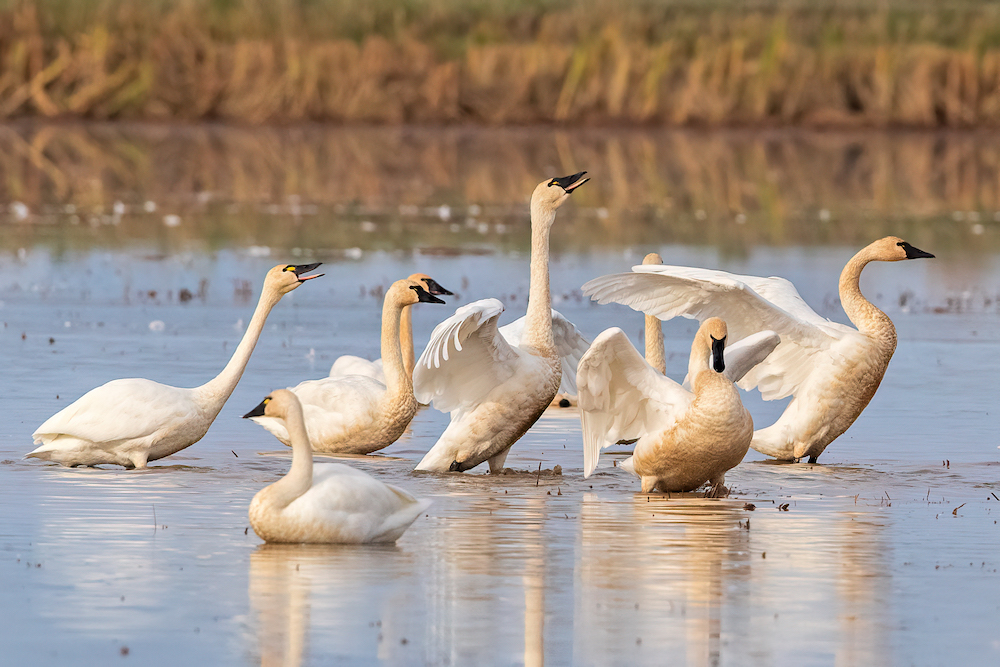Tundra Swans
By Luke Matthews
As one of the largest migratory waterfowl species in the Pacific Flyway, Tundra Swans have wingspans that can extend to from 5 to 7 feet and can weigh as much as 20 pounds. Adult Tundra Swans are all white with a small yellow spot below their eyes, a black bill and black feet. Juveniles, which typically spend the first year of their life with their parents, are often greyer in coloration and do not have a pure black bill.
In addition to Tundra Swans, you can occasionally see the larger Trumpeter and Mute Swans in California. Trumpeter Swans are also a native species in North America and are very similar to the Tundra Swan expect that they lack the yellow spot under their eyes. In contrast, Mute Swans are not native to North America and are largely considered to be an invasive species with negative environmental impacts and their populations have been increasing in California and across the United States. Mute Swans can be distinguished from the two native species by their bright orange bills and are much more common in urbanized settings.

Tundra Swans breed in the Alaskan and Canadian Arctic. Like most other swans, these birds mate for life and both sexes are involved in building the nest, defending their territory and raising their young (cygnets). Once the cygnets are able to fly, typically at the age of 2-3 months, the family will begin their southward migration to their wintering grounds. There are two distinct population of Tundra Swans. The first population splits off from the breeding grounds and will migrate south east in the Atlantic Flyway and winter along the East Coast. The second population travels down the Pacific Flyway and winters in the Western United States. More specifically, Tundra Swans in the Pacific Flyway winter in Washington, Oregon, California, Nevada, Utah and Idaho. The most recent counts by the California Department of Fish and Wildlife estimate that there are nearly 90,000 Tundra Swans that winter in California each year. Their numbers seem to be increasing in the Sacramento Valley and, although it is only anecdotal data, I have seen many more swans this year then I have in past years.
If you have never seen these large white birds, I would recommend that you take a drive through rice country in the Sacramento Valley or visit a National Wildlife Refuge. With 90,000 or more swans in the Valley this time of year you are almost guaranteed to see them!
Luke Matthews is the Wildlife Programs Manager for the California Rice Commission






